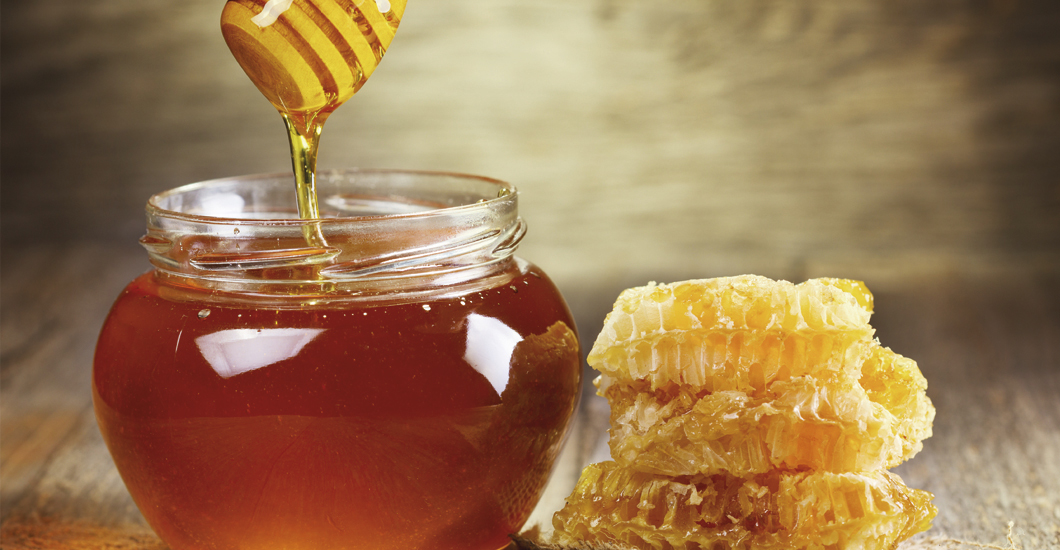A natural sweetener and basis for traditional home remedies, honey has been around since biblical times. It has served as an inspiration and remedy for poets and philosophers, and as a constant source of medical and biological discoveries.
For more than three decades, when spring arrives in Maoxian de Sichuan (Southeastern China), thousands of workers become human bees. Armed with delicate paint brushes made from pickup sticks, chicken feathers, and cigarette filters, the human pollinators climb the limbs of pear trees to cover thousands of buds that bloom on each tree with pollen one by one. This tedious process, that looks like the scene from Alice in Wonderland where the Queen of Heart's soldiers have to paint the white roses red to please her, is the result of the extinction of honey bees in the region in the 1980's.
The image of half-dressed men and women entwined in the branches of the trees to carefully paint the flowers not only catches the eye of photographers who have captured the poetry and surrealism of the work, but also hundreds of economists that have theorized about the reduction of monetary costs and benefits to replacing bees with well-trained hands to increase the pollen production. Biologists have strongly opposed these theories, emphasizing that conserving the species cannot be dependent on economic costs. For this reason, they have drawn attention to the massive bee die-off due to several factors affecting the hives, such as single-crop farming, the use of pesticides, and other industry practices that have changed agriculture since 1945 and have reduced the bee population in North America from 4.5 million hives to just 2 million in the last 50 years. The statistics are alarming, since one third of global agriculture depends on bees and their pollination, as well as all of the honey produced in the world.
This issue merits full attention, since honey is not just an excellent natural sweetener, but it also seems to be a cure-all. Not surprisingly, in Russia, a country with a celebrated honey tradition and where the world's most expensive wild honey is found, the bees are known as "winged pharmacists." Modern science has studied the miraculous properties of this delicious nectar, that have been celebrated since biblical times.
If you examine a spoonful of honey closely, besides glucose and fructose you will find a high mineral content of iron, phosphorus, and sodium, vitamin B complex, amino acids and enzymes like the inhibin and folic acid, with antibiotic components that, when combined with lemon, make the perfect cough syrup. Also, these same components regulate cholesterol and strengthen the heart muscle. When the nectar decomposes through enzymes in the bee's saliva, hydrogen peroxide is produced, as well as a protein known as defensin-1 which has antibacterial and antiseptic properties. Studies published in the British Medical Journal about this protein found that honey is an effective treatment for acid reflux, can heal ulcers, and alleviate other gastrointestinal diseases. It is also highly recommended for treating acne and healing burns and other wounds. To make a great exfoliant that nurtures and hydrates sensitive skin, just combine it with olive oil, brown sugar, and lemon juice.
In 1922, when English archaeologist Howard Carter discovered Tutankhamen's tomb, he found sealed pots containing honey, still edible despite being kept since 1327 B.C. Another example of the long shelf life that honey has, is Alexander the Great. His body was brought to Alexandria from Babylon thanks to honey's embalming qualities. Seemingly, honey's miraculous qualities have been around since the start of humanity: bee-keeping studies have found that in the Neolithic period (7500 B.C.), when man first started using tools for farm work and shepherding, bees were domesticated to facilitate the collection of honey from the hives. Archaeologist have discovered cave paintings in the Cueva de la Araña in Valencia that date back more than seven thousand years showing humans harvesting honey from a honeycomb.
Its medicinal and nutritional properties have been documented in Roman, Islamic, and Greek texts in which they highlight the use of honey-based salves and drinks to stay eternally young. Also, in ancient Indian ayurvedic medicine texts, honey was used to treat imbalances of the body and cure impotence, premature ejaculation and urinary tract infections, among other conditions.
"Last night when I was sleeping / I had a dream, a blessed dream! / that I had a hive / in my heart; / and the golden bees inside / were turning / the old bitterness into / white wax and sweet honey." Antonio Machado wrote these verses amongst a long tradition of scientists, sociologists, writers and curious observers who have marveled at how organized the bee colonies are: from Juan Luis Guerra, who asked his lover to seek him like a bee to its honeycomb and drink in the honey of his life, to the reflections of Adam Smith and John Keynes about the division of labor from the Fable of the Bees, written by Dutch philosopher Bernard Mandeville in 1714. In the Song of Songs it reads, "Your lips drop sweetness like the honeycomb," about the sweetness of love, while in Agricultural Topics written by Roman Marco Terencio Varrón in 36 B.C, he ponders the geometric logic hidden behind the honeycombs.
Maybe that's why the strange image of the Sichuan peasants is so alarming. Without bees, the world would be without honey, and Juan Luis Guerra's song could become a story as old as those of Tutankhamen and Alexander the Great.
Interesting Data
- Between 40,000 and 60,000 bees live in a hive.
- In each trip, a worker bee can visit between 50 and 100 flowers.
- The bees collect and store the nectar in their thorax
- When they arrived at the hive, other worker bees extract the nectar.
- The bees transform the nectar into invertase and deposit it into the honeycomb cells.
- In the cells, the invertase loses 80% of its water and begins to create honey.



